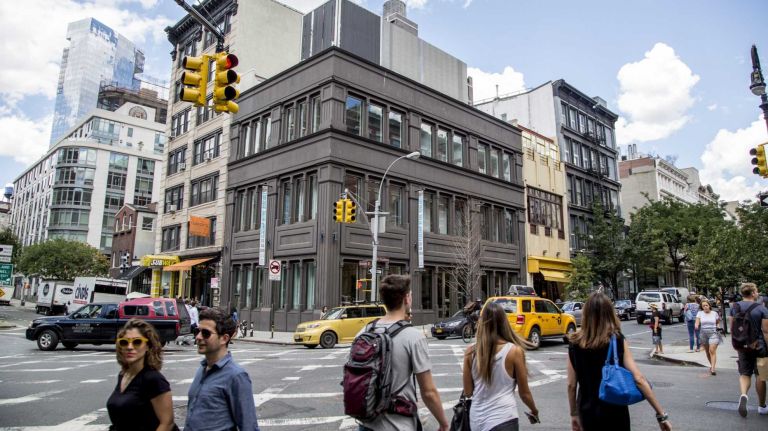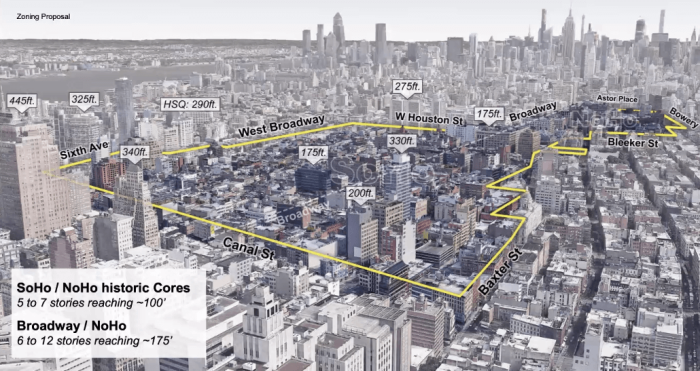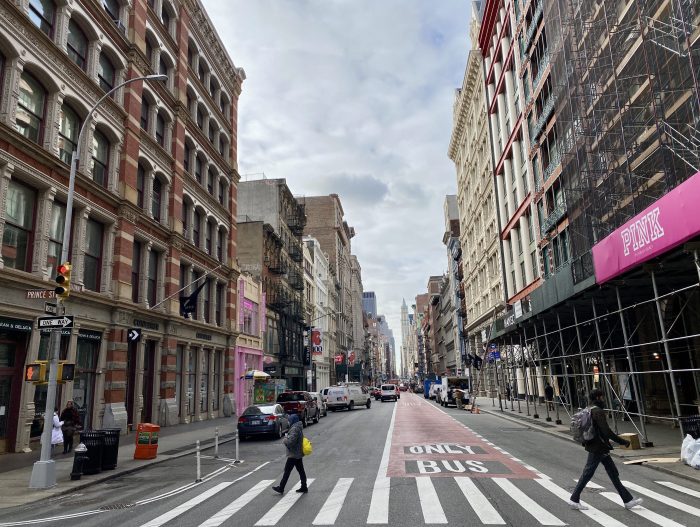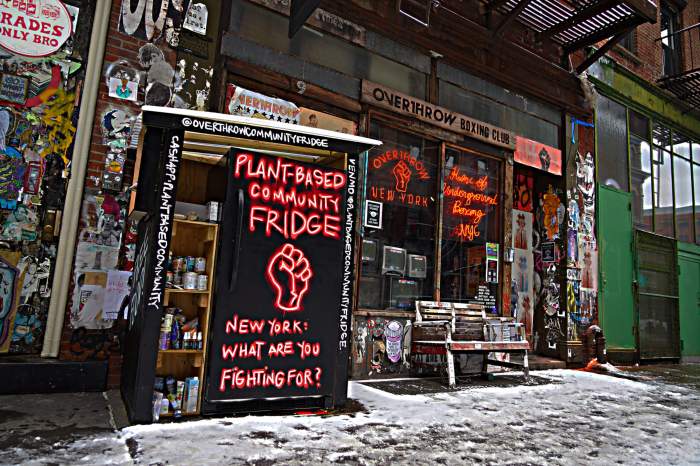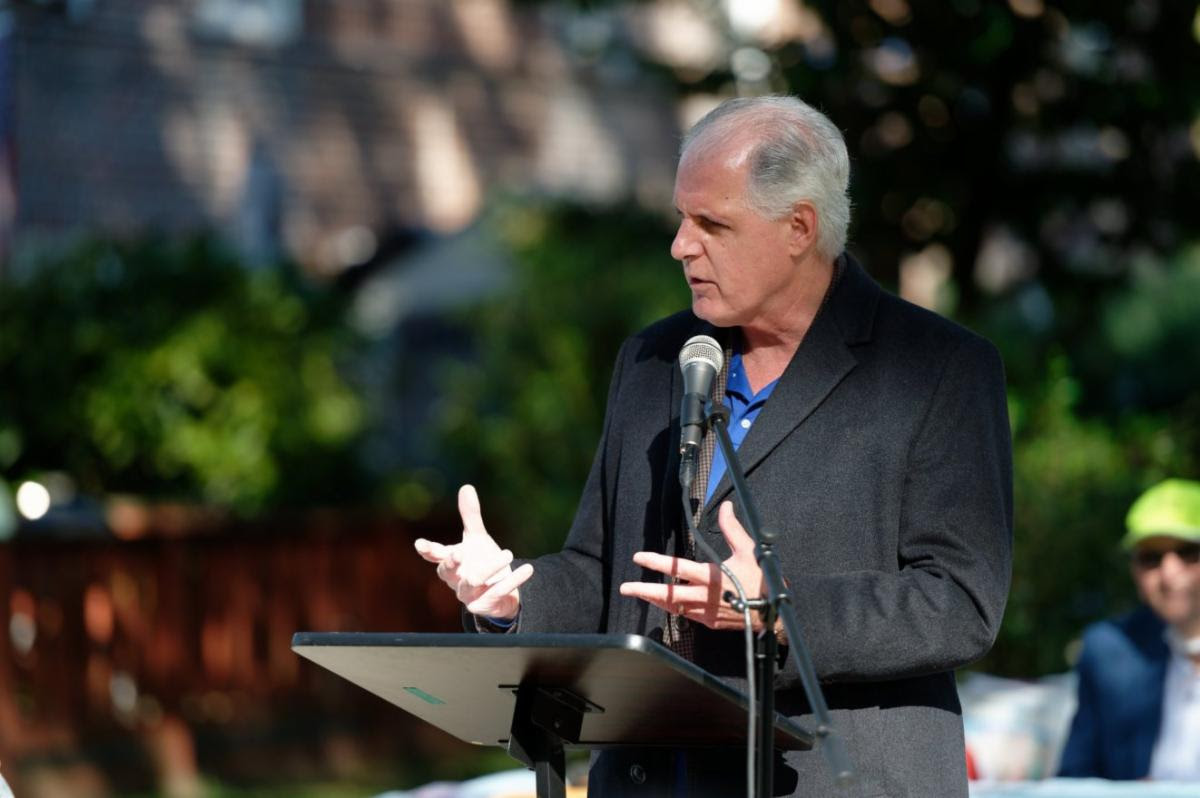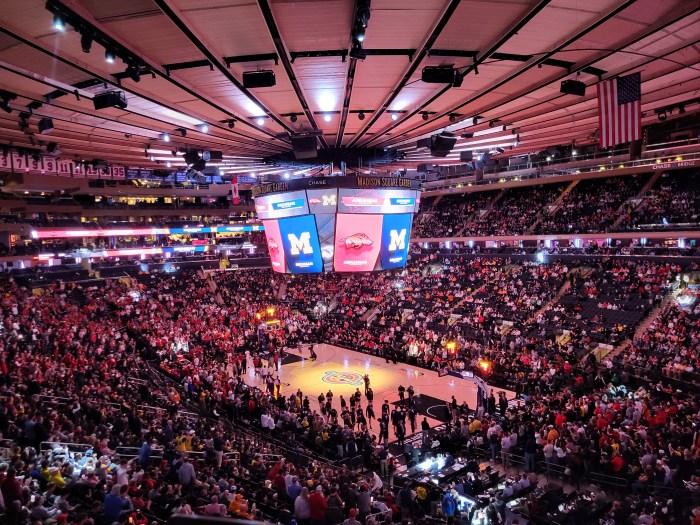The contested SoHo and NoHo rezoning took one step closer to becoming the law of land on Thursday after it received nearly unanimous City Council committee approval.
The proposal, which would largely create more residential and retail space, passed in a 15-1 vote in favor in the Land Use Committee and passed unanimously in the Zoning and Franchise Subcommittee.
The rezoning, which covers 56 blocks in the neighborhoods mostly zoned for manufacturing use, was proposed by Mayor de Blasio last year as a late-tenure attempt to create affordable housing in the affluent Manhattan neighborhoods. It will now go for a full council vote next week.
“It marks a critical change to the city’s historic practice of focusing neighborhood rezoning on communities of color, moving us toward a more equitable future where all neighborhoods contribute their fair share to our ongoing housing crisis facing New York City,” said Noho Councilmember and Speaker candidate Carlina Rivera.
A last minute scramble to negotiate the zoning text, which was “excruciating” according to Lower Manhattan Councilmember Margaret Chin, resulted in several modifications from the version that was passed by the Department of City Planning in October.
“After receiving a scope of work that fell short of what we in the community wanted. We began a rigorous series of tough negotiations and internal reviews so that we could do our best by the neighborhood,” said Rivera.
The modifications include the reduction of commercial floor-area-ratio in order to encourage housing development, the elimination of dorm and college university usage and the requirement of the city’s Mandatory Inclusionary Housing plan one for new development, requiring fewer rent-restricted units overall, but maintaining a deeper level of affordability.
Additionally the changes include a set of limitations for new retail establishments. A modification places imitations on eating and drinking establishments everywhere in the rezoning area to 8,500 square feet of floor area per establishment. The text also includes a special permit process for large-scale retail of over 10,000 or 25,000 square feet depending on the street size in order to take quality of life issues into play.
The SoHo-NoHo Arts Fund, which was woven into the plan to prevent the erosion of SoHo’s historic arts identity, will gain transparency measures. The fund was set up so that owners of SoHo’s artist lofts who sell units to non-artists will be required to contribute part of the proceeds back to the arts community. will have to submit a report to the Council Speaker detailing the amount of money deposited into the Arts Fund and any expenditure of funds.
City Planning officials predict that the plan will produce 3,500 units of housing, including 900 affordable units. But opponents of the plan have pointed out that planner estimates of this type have been shown to overestimate the number of affordable units.
These critics loudly panned the news that the rezoning had overcome another hurdle.
“Study after study showed that the plan is likely to produce little if any affordable housing, and is almost surgically designed to discourage the construction of affordable housing, and the modifications made by the City Council will do little to change that,” said Andrew Berman, the executive director of Village Preservation.



